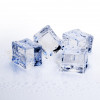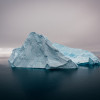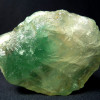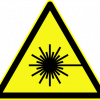The Water Cycle: Where does water come from?
Interview with
Turns out, our planet earth is a watery place, its in the ground, in our atmosphere and water covers 71 percent of the Earth’s surface. But our water supply never stays still, it’s moving from place to place all the time… and that’s thanks to something called the water cycle. Jonathan Bridge is a physical geographer at Sheffield Hallam University, who explained how it works...
Jonathan - It’s essentially the movement of water from place to place on the Earth’s surface and it’s easy to see that most of the water is in the oceans. The Sun then adds energy to the surface of the ocean and evaporates water, so it’s a sort of purifying process if you like. What’s held in the atmosphere is just the water molecules and those salt molecules or those salt ions are kept within the sea so, gradually, it became saltier over time. Then, when the atmospheric conditions are right, that water vapour then condenses and forms droplets, which fall as rain or snow or other types of precipitation.
Izzie - Something us brits know all too well! This heating and evaporating is all about transferring energy. It’s like when your body becomes too hot, sweat evaporates off of your body and carries the excess heat with it into the air. The same happens with the surface of the Earth. As water evaporates, heat is carried from the Earth’s surface into the atmosphere. Likewise, as rain falls down, heat can be transferred from the atmosphere back to the ground. But how are these all-important clouds formed?
Jonathan - The atmosphere exists at various different temperatures and pressures, and the ability of gas to hold water vapour in its gaseous form depends on the local temperature. As the air containing the water rises, it cools down and the water vapour loses its ability to exist in a gaseous form. So it starts to condense out and turn into tiny droplets of liquid water, so that forms clouds. And then, eventually, those droplets of water grow sufficiently large that they can’t be held up by the air any more and so they fall to Earth under gravity.
Izzie - Essentially, the rain falls to the earth’s surface and one of three things can happen.
Jonathan - If you’ve got a natural landscape with lots of vegetation: trees and plants and so on, then quite a large fraction of that rainfall is caught by the plants, either directly by falling on their leaves and being absorbed or it goes into the soil and then the roots immediately take that water back up. Maybe 40% of the rainfall is immediately recycled via the plants and then ends up being returned to the atmosphere by the process called ‘evapotranspiration,’ that is part evaporation and part transpiration which is the sort of plants’ breathing process if you like to think of it like that.
Izzie - Or option number two…
Jonathan - If it’s not caught by the plants then it can infiltrate into the soil, and into the underground into the subsurface. Some of it will go into the soil and be transferred and it can flow through the soil horizontally. Some of it flows vertically down into the deeper subsurface and eventually forms groundwater which is held in porous rocks, deep underground and that is a long term store. There’s some groundwater aquifers, some reserves of groundwater which is 30,000 years old, which are almost sort of fossils of water which fell a long long time ago. Other aquifers are much more shallow and their recharge rates, or their turnover rates are more rapid.
The final pathways is the most obvious one we think of when it rains, and that’s flowing over the ground’s surface. So overland flow which, eventually, runs into streams and rivers and lakes and forms the water we see on the land’s surface. In natural conditions, that might only be 10% of the total rainfall.
Izzie - And obviously, it’s call the water cycle for a reason. This surface water runs into rivers which combine to make bigger rivers and the bigger rivers run down to the sea, collecting salts and rocks with them as they go. And the process starts all over again.









Comments
Add a comment